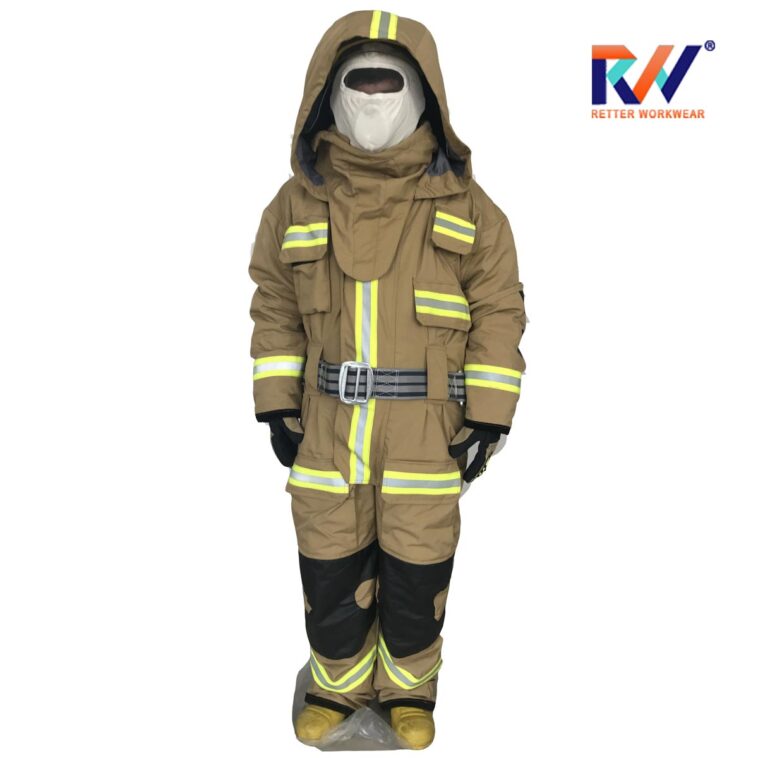When it comes to protecting workers on the frontline, fire suits are more than just garments—they’re an absolute necessity. Whether it’s firefighters charging into flames, or industrial personnel working near molten metals or electrical hazards, the suit curated by Retter Workwear, one of the prominent Fire Suit Manufacturers, is their first and last line of defense. Behind this vital gear are manufacturers who devote themselves to creating garments that can perform under pressure, in moments when safety is non-negotiable. These suits are not designed for style—they’re built for survival.
These manufacturers understand that in the harshest environments, their product must do more than cover the body—it must save lives. The materials, design, and testing procedures behind each suit are carefully selected to meet extreme safety demands. Their goal is to provide users with something they can rely on in unpredicted life-threatening conditions. From innovation in heat-resistant fabrics to breakthroughs in ergonomic design, manufacturers are constantly raising the bar to meet industry needs without compromise.
Advancements in Heat-Resistant Fabric Technology
To achieve optimal performance, manufacturers begin by engineering suits with advanced heat-resistant fabrics. The science behind these materials is both complex and fascinating. High-performance fibers are woven into multi-layered configurations that can block intense heat, delay combustion, and insulate the body from radiant temperatures. These layers are designed to act as barriers, providing protection even under extended exposure to flame or heat. The challenge lies in balancing durability with comfort. Fire suits must not only be tough but breathable, flexible, and lightweight enough for long hours of wear. That’s where leading Fire Resistant Clothing Manufacturers have made great strides. With innovations like moisture-wicking inner linings and stretchable flame-retardant fabrics, workers are now protected without sacrificing mobility or comfort. These features make a real difference in high-stress, high-temperature environments where every move counts.
Rigorous Testing and Quality Assurance Processes
Safety standards are not optional—they’re a critical component in the fire suit manufacturing process. From initial design to final stitching, every element undergoes extensive testing. Suits must pass various international certifications, each of which evaluates resistance to flame, heat transmission, tear strength, and chemical durability. These quality control processes go beyond surface-level inspections. Advanced thermal manikin testing, lab-based exposure simulations, and durability stress tests are used to push the suits to their limits. Leading manufacturers also implement ongoing audits and third-party evaluations to maintain consistency and reliability across batches. These procedures are where Fire Retardant Coverall Manufacturers stand out. Their full-body suits are designed for all-around protection, particularly in industries where explosive risks or multi-hazard exposure is common. From utility workers to oil rig operators, these one-piece designs are trusted for their complete coverage and high-performance build.
Design Innovation for Enhanced Worker Experience
Protection is paramount, but the suit must also be practical for daily use. Today’s manufacturers have adopted a user-centric approach to design. They consult industry professionals to understand how the suit performs in action, then adapt their designs accordingly. The result is smarter, more functional gear that prioritizes mobility, ventilation, and comfort. Features such as adjustable cuffs, reinforced knees, articulated sleeves, and lightweight layering systems have become standard. Reflective trims improve visibility, while pocket configurations are customized for specific tools and job functions. Some manufacturers are even incorporating wearable tech solutions, such as thermal sensors and GPS-enabled RFID tags, to help safety officers track and monitor suit usage in real-time. Each industry has its own unique demands, and manufacturers have evolved to meet them.
In a world where high-risk jobs are part of daily life for millions of workers, the role of manufacturers extends far beyond stitching fabric together. Their mission is rooted in a promise—to deliver gear that can be counted on in moments of extreme danger. This promise isn’t just fulfilled in design labs or factories; it is carried out every time a worker puts on their suit and steps into harm’s way. The trust placed in these suits is immense, and it is earned through relentless testing, user-driven innovation, and unwavering dedication to quality. Over the years, these suits have transformed from bulky, uncomfortable armor into lightweight, high-tech solutions that combine safety with mobility and comfort. But what hasn’t changed is the core objective: saving lives.
This post was created with our nice and easy submission form. Create your post!





